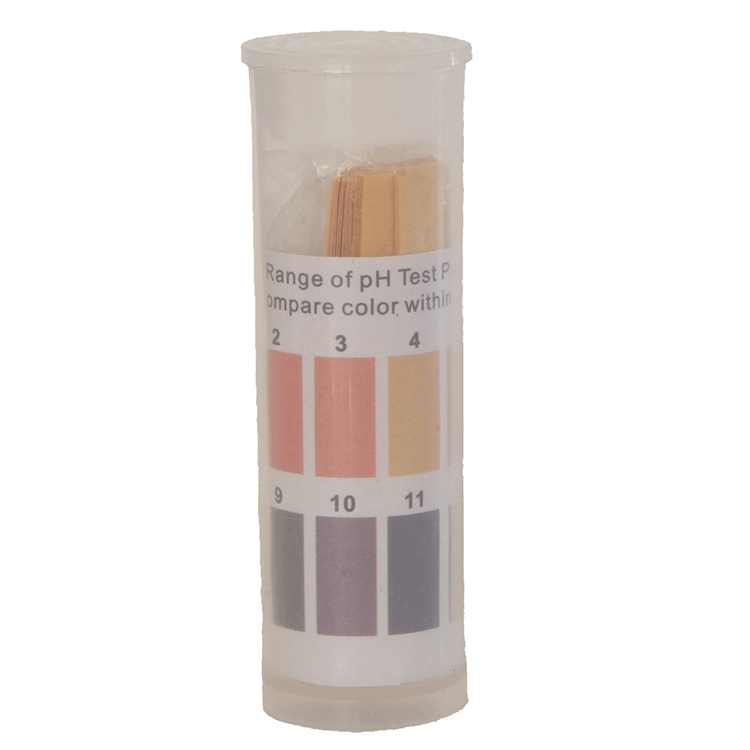
After this lesson, students will be able to:
- Use scientific tools to determine whether the soil is acidic, basic, or neutral.
During this lesson, students will:
- Accurately test and record the pH of the soil using a pH strip and probe.
Materials
- Job Board
- Soil pH Lab Visual Aid
- Watering cans
- Sticks for stirring
- pH strips
- pH color key
- Signs for sample areas
- Clipboards
- Pencils
- Soil pH Lab worksheets
- Calculator
before you begin
- Create job board, listing garden jobs and pH lab
- Create the Visual Aid.
- Copy the Soil pH Lab worksheet to hand out.
- Label the sites and dig holes where samples will be collected.
- Collect all the materials, then set them up to make a pH lab.
AT THE OPENING CIRCLE
Welcome students and introduce the Soil pH Lab.
- Ask students to explain what pH measures.
- Explain that pH is relevant to the garden because it indicates nutrient availability.
- Tell them that the ideal acidity level for soil is between 6 and 7.
- Explain that microorganisms, like bacteria, are most prevalent in slightly acidic soil (6-7) and that microorganisms are responsible for making nutrients available to plants.
- Explain that students will use pH strips to test the pH of three different areas in the garden: an annual bed, a perennial bed, and a compost pile.
- Prompt students to think about scientific procedures and why it is necessary to test three different areas of the garden.
- Ask students to predict which site will be in the ideal 6-7 window on the pH scale and why.
- Divide students into four working groups for garden jobs. Lead one of the groups to the pH lab for the first rotation.
GARDEN WORK ROTATION
Each group of students rotates through the pH lab as the other groups work in the garden.
- Encourage students to think about and discuss scientific procedures, pH, and soil health while they work in the garden.
- One group of students starts at the pH lab while the other three groups begin their garden jobs.
- When the first group is done with the pH lab, they return to (or begin) their Garden Work Rotation and the next group starts the pH Lab.
AT THE pH LAB
Gather students around the pH lab table
- Divide the group into three smaller groups. Each group should have:
- Pencils
- pH strips with the color code key
- Clipboard with a Soil pH lab worksheet
- Stir stick
- Watering can
- Each group of 2-3 students will test a sample.
- Bring students to their test site and demonstrate how to make a soil solution, dip the pH strip, and how to read the key.
- Have each group take a reading from the strip, record their data on the worksheet, and return to the table to derive a mean average.
- Ask students to identify their samples as acidic or basic.
- Ask students what abiotic factors might alter the pH of the soil (rain, sun, temperature).
- Prompt students to think about methods that can be used for maintaining the soil pH between 6 and 7 (e.g. compost, amendments like lime stone and sulfur)
- Have students reset the pH lab for the next group and return to garden work.
AT THE CLOSING CIRCLE
Using the whiteboard at the front of the Ramada, collect data from each group.
- Ask students what they notice about the pH of each site and prompt them to think about methods that can be used for maintaining the soil pH between 6 and 7 (e.g. compost, amendments like lime stone and sulfur).
- Have students serve a seasonal fruit, vegetable, or herb tasting.
- pH
- Basic or alkaline
- Acidic
- Neutral
- Microorganisms
Academic Standards
English Language Arts and Literacy, Grade 8
Follow precisely a multistep procedure when carrying out experiments, taking measurements, or performing technical tasks.
Present claims and findings, emphasizing salient points in a focused, coherent manner with relevant evidence, sound valid reasoning, and well-chosen details; use appropriate eye contact, adequate volume, and clear pronunciation.
Science & Engineering Practices
Planning and carrying out investigations in 6-8 builds on K-5 experiences and progresses to include investigations that use multiple variables and provide evidence to support explanations or solutions. Conduct an investigation to produce data to serve as the basis for evidence that meets the goals of an investigation. Make observations and/or measurements to produce data to serve as the basis for evidence for an explanation of a phenomenon or test a design solution. Test two different models of the same proposed object, tool, or process to determine which better meets criteria for success
Edible Schoolyard Standards
Tools
Select, use, and care for scientific measuring tools in the garden, measure precisely and understand what results mean.
Program
Students work with each other and teachers to develop community and personal stewardship, along with skills that will help them navigate different situations throughout their lives.
All lessons at the Edible Schoolyard Berkeley are developed in collaboration with the teachers and staff of the Edible Schoolyard and Martin Luther King, Jr. Middle School.
This lesson follows the BEETLES Project’s Learning Cycle (Invitation > Exploration > Concept Invention > Application > Reflection) and uses their Discussion Routines (e.g. Think-Pair-Share and Whip-Around). For more information, review the BEETLES Learning Cycle (PDF) and Discussion Routines (PDF) documents or visit www.beetlesproject.org.




